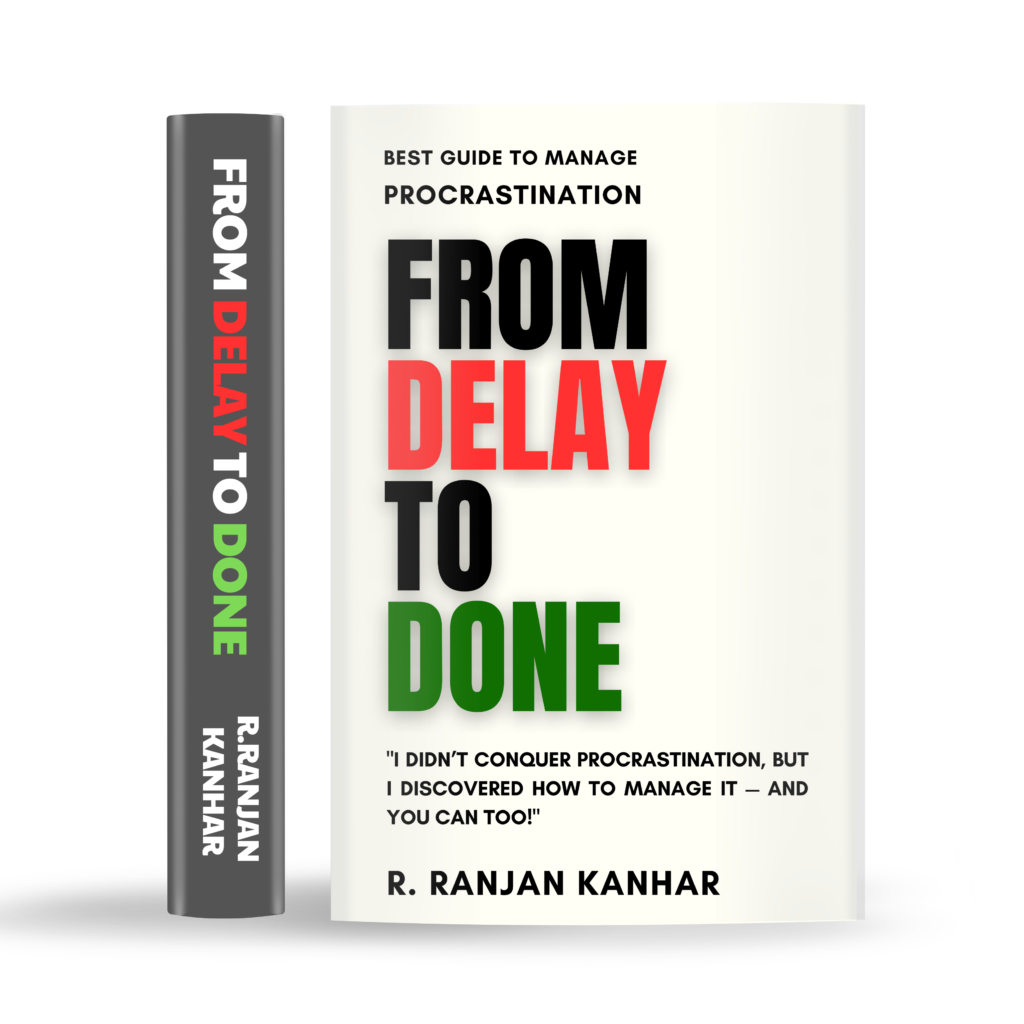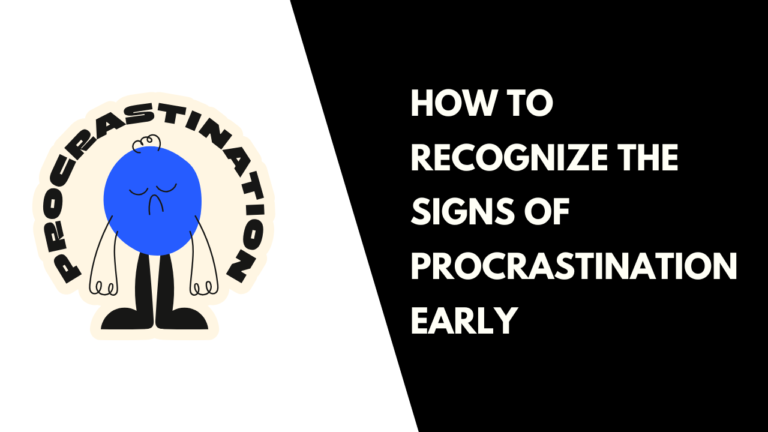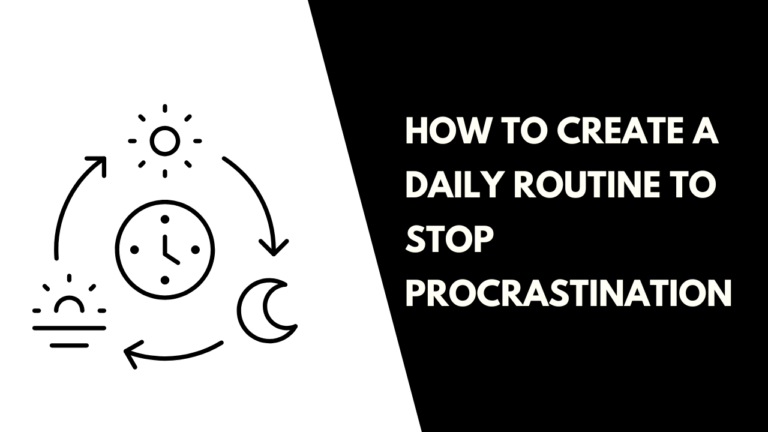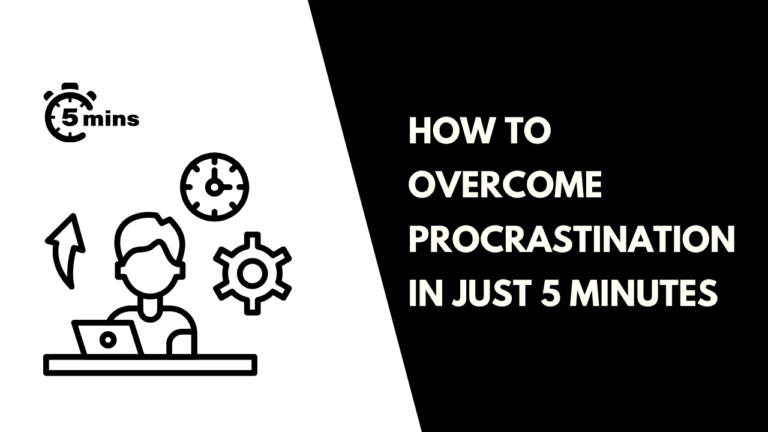How to Beat Procrastination Using Science – 20 Best tips
Introduction – Beat Procrastination Using Science
Procrastination isn’t just about laziness; it’s often the result of deeper psychological and emotional factors. Fortunately, science has delved deep into the “why” and “how” of procrastination, offering us actionable strategies to overcome it. In this blog, we’ll uncover the 20 best science-backed tips to beat procrastination using science, helping you unlock your full potential.
Table of Contents
ToggleWhether you’re a student delaying assignments, an office employee putting off reports, or an entrepreneur postponing big decisions, these insights will resonate with you. Let’s dive into the solutions!
1. Understand the Science Behind Procrastination
Why we procrastinate: Procrastination stems from the brain’s tendency to prioritize immediate rewards over long-term benefits. This is tied to the limbic system (pleasure center) overriding the prefrontal cortex (decision-making).
Example:
Think about delaying a workout. Your brain tells you that sitting on the couch feels better now, even if exercising benefits you in the long run.
Actionable Tip:
Recognize the mental tug-of-war. Label your emotions (“I feel overwhelmed”). This simple act helps activate your prefrontal cortex and reduces impulsivity.
2. Set Specific, Achievable Goals
Vague goals can feel overwhelming and lead to procrastination. Instead, break tasks into smaller, actionable steps.
Example:
Instead of saying, “I’ll finish my project today,” say, “I’ll draft the introduction in the next hour.”
Actionable Tip:
Apply the SMART framework: Set goals that are Specific, Measurable, Achievable, Relevant, and Time-bound.
3. Use the 2-Minute Rule
This strategy suggests starting tasks that take less than two minutes immediately.
Example:
If responding to an email takes two minutes, do it now rather than delaying.
Science Behind It:
Starting small builds momentum. According to Newton’s First Law of Motion, an object in motion will continue moving at a constant velocity unless acted upon by an external force.
4. Practice Time Blocking
Allocate specific time slots to different tasks during your day.
Example:
Set 9 AM to 11 AM for deep work, 11:30 AM for emails, and so on.
Why It Works:
This method combats “decision fatigue,” reducing the chances of procrastination.
5. Tackle High-Priority Tasks First (Eat the Frog)
As Mark Twain suggested, if you eat a frog first thing in the morning, the rest of the day seems easy.
Example:
If writing a report feels daunting, start with that before other less critical tasks.
Scientific Insight:
Willpower is a finite resource. Using it early in the day ensures better focus on challenging tasks.
6. Use Rewards and Incentives
Pair tasks with rewards to make them more appealing.
Example:
Promise yourself a treat (like a coffee or 10 minutes of social media) after completing a task.
Why It Works:
Dopamine, often referred to as the brain’s “reward chemical,” drives motivation by triggering action when you anticipate a reward.
7. Limit Distractions
A study by the University of California found that it takes an average of 23 minutes to refocus after a distraction.
Example:
Switch off notifications, use noise-canceling headphones, and keep your phone in another room while working.
Tools to Help:
- Freedom (blocks distracting websites)
- Focus@Will (background music for productivity)
8. Apply the Pomodoro Technique
Work for 25 minutes, followed by a 5-minute break. Repeat this cycle four times, then take a longer break.
Example:
If studying for an exam, focus intensely during each Pomodoro session, knowing a break is just minutes away.
Why It Works:
Short bursts of work with regular breaks reduce mental fatigue and maintain focus.
9. Visualize the End Result
Picture the satisfaction of completing the task or the consequences of not doing it.
Example:
Visualize acing a presentation or imagine the stress of last-minute preparation.
Science Insight:
Visualization activates neural pathways associated with motivation, making tasks feel achievable.
10. Reframe Negative Thoughts
Procrastination often stems from fear of failure or self-doubt.
Example:
Procrastination is often rooted in fear of failure or self-doubt.
Why It Helps:
Rather than thinking, “I’m not good at this,” try reframing it to, “I’ll improve as I keep going.”
11. Leverage Accountability Partners
Sharing goals with someone increases the likelihood of following through.
Example:
Tell a friend about your deadline or hire a coach for regular check-ins.
Why It Works:
Accountability triggers the “commitment bias,” motivating you to stay consistent.
12. Focus on Progress, Not Perfection
Perfectionism can paralyze action. Aim for “done,” not “perfect.”
Example:
Submit a draft instead of obsessing over every detail. You can always revise later.
13. Optimize Your Environment
Design a workspace that reduces distractions and enhances productivity.
Example:
Keep your desk organized, add good lighting, and personalize it with motivational quotes.
14. Practice Self-Compassion
Be kind to yourself if you slip up. Dwelling on procrastination only perpetuates it.
Example:
If you waste an hour scrolling social media, acknowledge it without judgment and refocus.
15. Use Technology Wisely
Apps like Todoist, Trello, and Notion help manage tasks effectively.
Example:
Schedule reminders for deadlines and break projects into manageable sections.
16. Reflect and Learn from Past Procrastination
Analyze why you procrastinated and identify triggers.
Example:
If you delayed a project due to unclear instructions, ensure better communication next time.
17. Incorporate Movement
Physical activity boosts energy and focus.
Example:
Take a brisk walk or stretch during breaks to reset your mind.
18. Use Fear of Regret as Motivation
Imagine how you’ll feel if you miss out on an opportunity due to procrastination.
Example:
Think about the career growth you might sacrifice by delaying skill development.
19. Break the Task Cycle with a Fresh Start
Take advantage of the “fresh start effect” by starting tasks at the beginning of a new week, month, or year.
Example:
If you’ve been procrastinating all week, commit to starting fresh on Monday.
20. Celebrate Small Wins
Every small accomplishment is a step toward bigger goals.
Example:
If you finish a chapter of your book, reward yourself with a relaxing activity.
Conclusion
Beating procrastination isn’t about willpower alone—it’s about understanding the psychology behind it and using evidence-based strategies to counter it. By applying these 20 science-backed tips, you can overcome procrastination and achieve your goals with clarity and confidence.
Remember, it’s not about perfection but progress. Start small, stay consistent, and soon you’ll find procrastination becoming a thing of the past.
So, which tip will you try first to beat procrastination using science? Share your thoughts in the comments!
“Stop postponing your dreams! From Delay to Done is your ultimate guide to conquering procrastination. Grab your copy today on Amazon!







